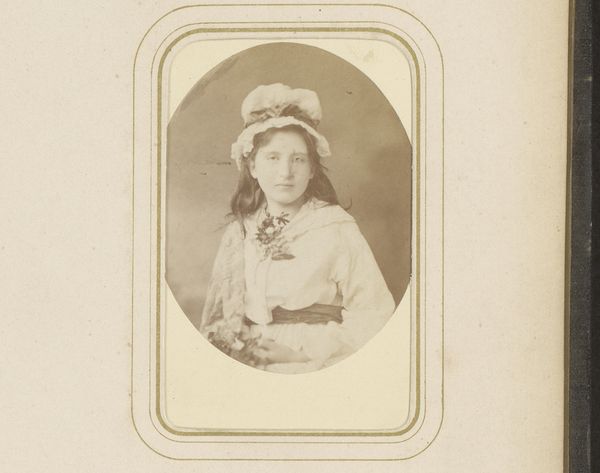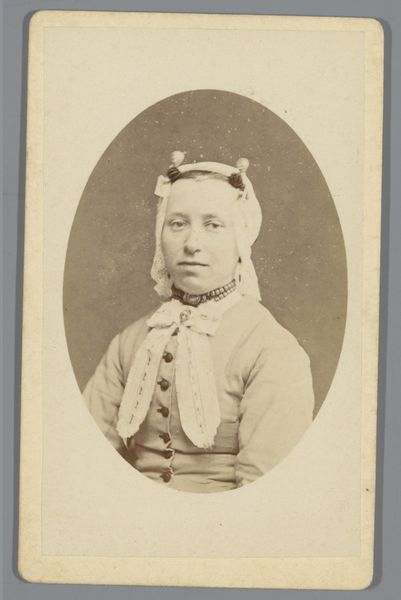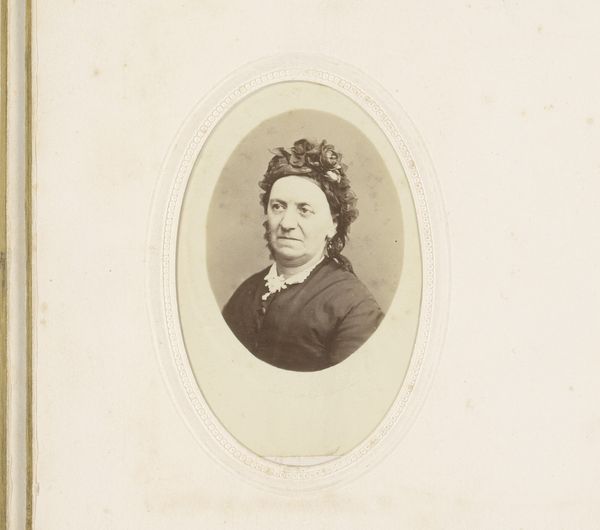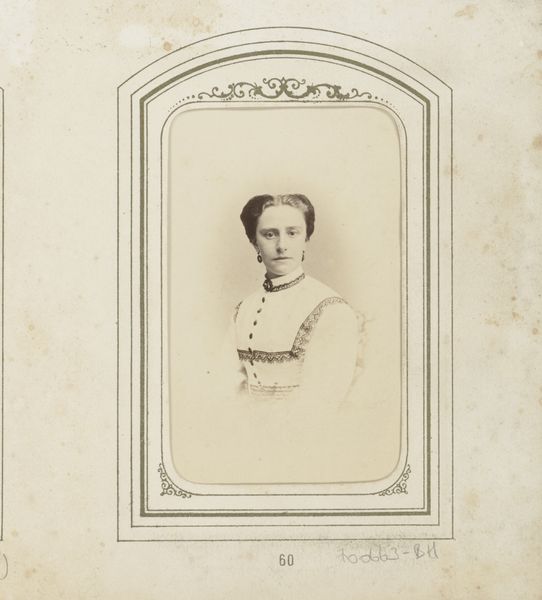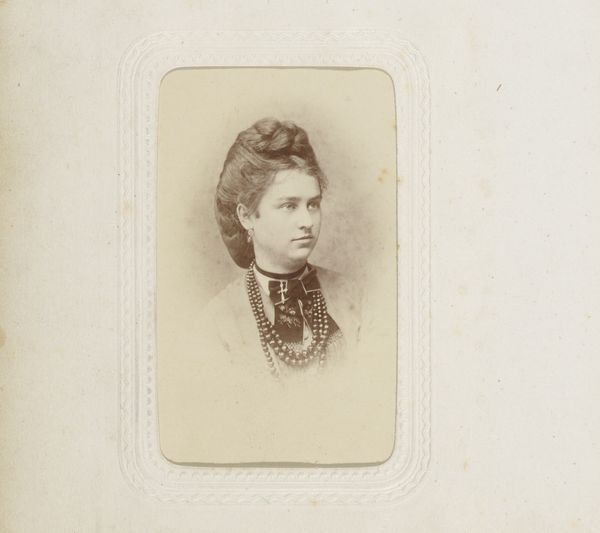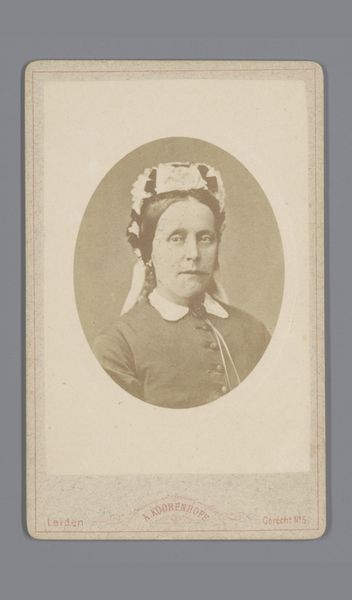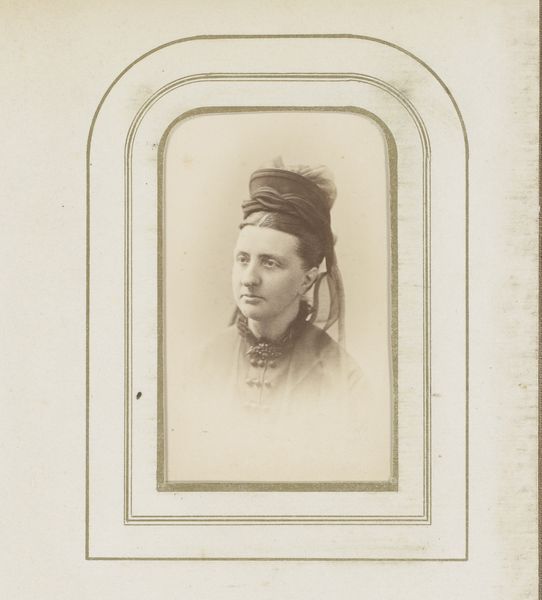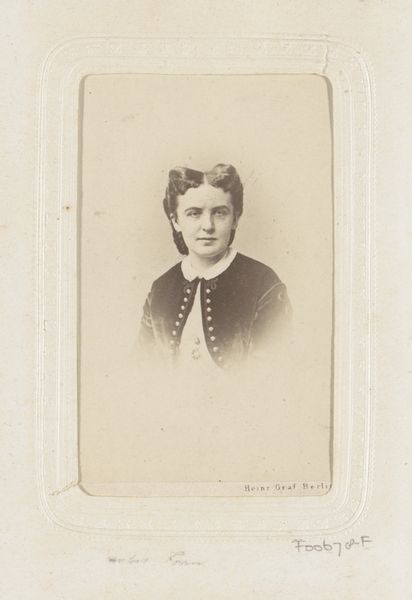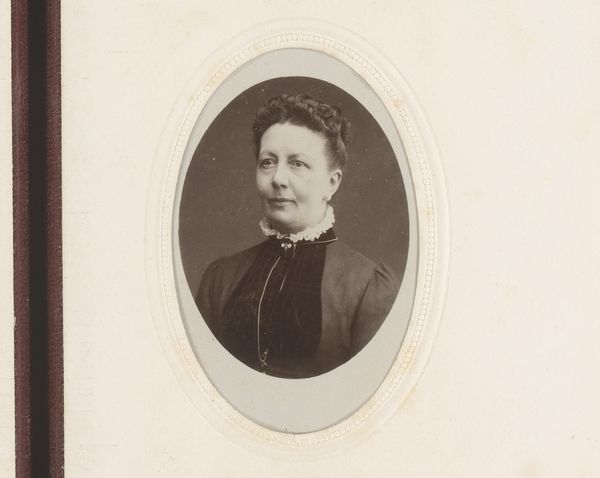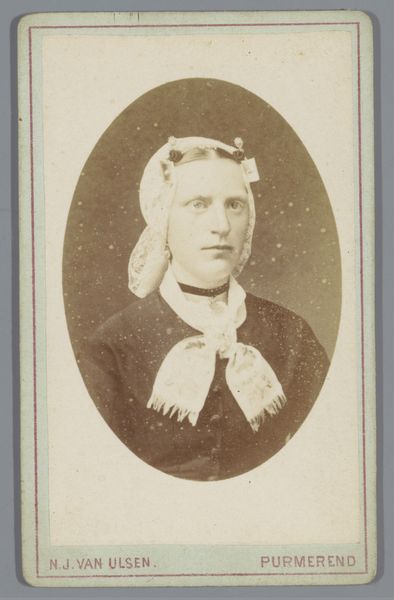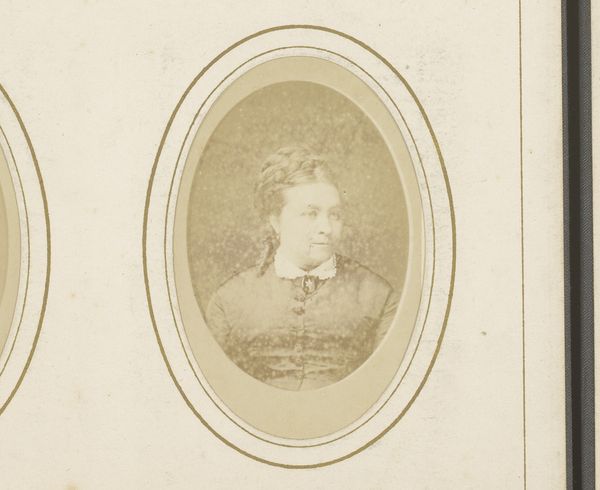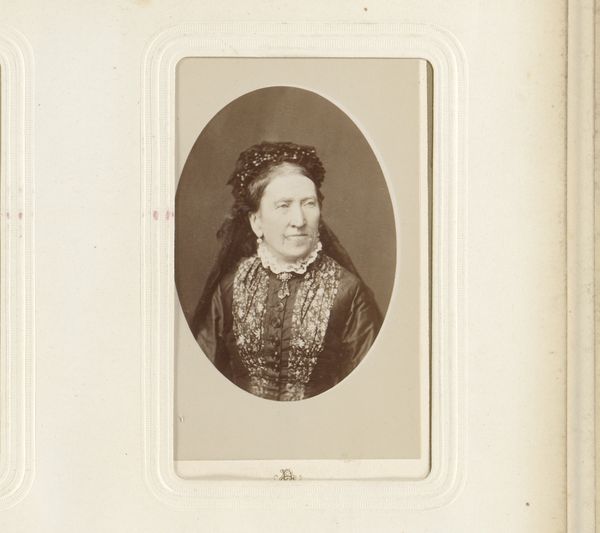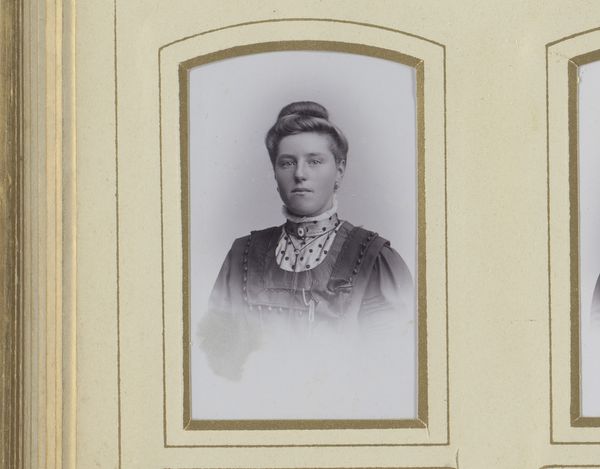
photography, albumen-print
#
portrait
#
photography
#
portrait drawing
#
portrait art
#
albumen-print
Dimensions: height 87 mm, width 53 mm
Copyright: Rijks Museum: Open Domain
Editor: Here we have "Portret van een vrouw met hoofddeksel en medaillon," made between 1860 and 1900, attributed to J. Tomáš. It's an albumen print photograph. What strikes me is the formality – a real contrast between the woman’s almost severe expression and the elaborate headwear. What's your read on this portrait? Curator: My interest lies in the materiality of this image. The albumen print process itself, labor-intensive and requiring specific materials – glass plate negatives, egg whites, silver nitrate – speaks volumes. It wasn't a democratic medium at this time; think about the resources needed. The elaborate headwear and medallion, signifiers of status, wouldn’t be accessible to most women of the era. This image then becomes an artifact of social stratification, a product of specific material conditions that reinforce existing power structures. Does this change how you see the image, knowing something about albumen prints? Editor: It does! I hadn’t considered the privilege inherent in simply *having* a portrait done. The materials tell a story of access and wealth. I was focused on the sitter’s face, but now I see the whole photograph as a manufactured object, showcasing resources as much as likeness. Curator: Exactly. And beyond the creation of the image, think of its consumption. This wasn’t a fleeting digital image; this was an object intended for display, preservation, a family archive. How would its meaning shift as a physical object passed through different hands over generations? It gives us access into this person’s legacy as this photo will always serve as material representation of them. Editor: So it's not just *who* is in the photo, but how the photo itself was made, preserved, and used that tells the real story. Curator: Precisely! It underscores the necessity to always think of art's production, circulation, and consumption as key factors shaping our interpretations. Editor: Thanks for showing me the materials underneath it all!
Comments
No comments
Be the first to comment and join the conversation on the ultimate creative platform.
